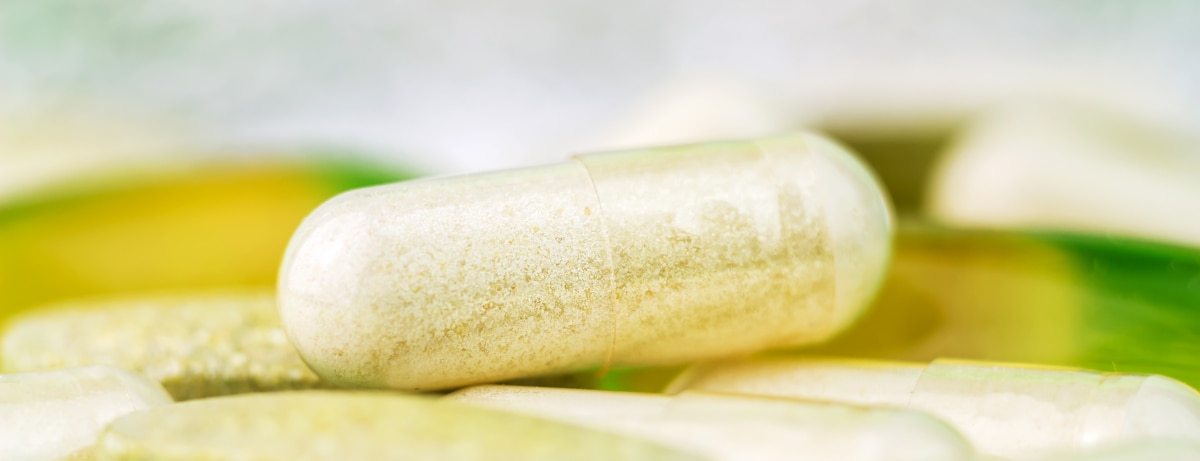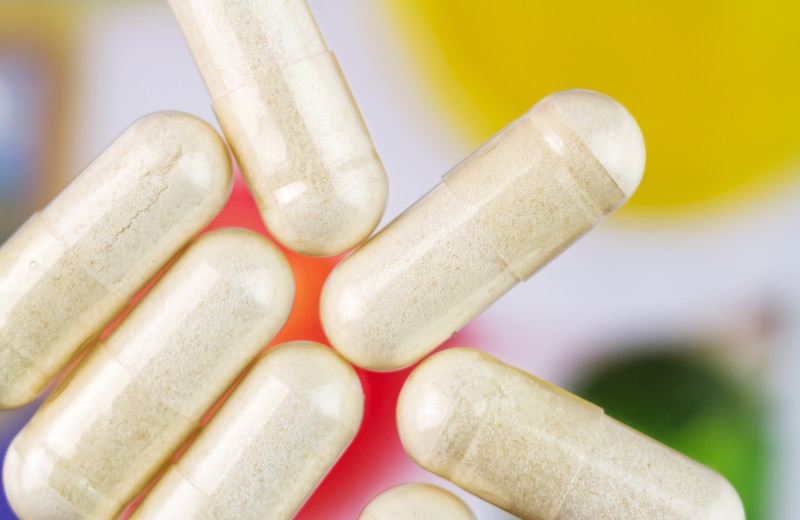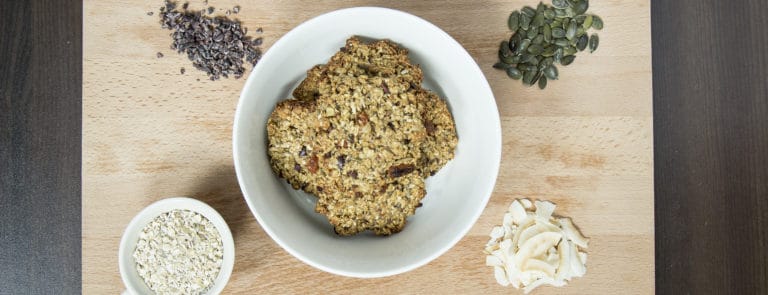10% off £35
Glucosamine: what is it?

Glucosamine is a nutritional supplement that’s on the rise in popularity. But what is it? How does it work? And are there any potential side effects to be aware of? We answer all these questions and more in this article.
What is glucosamine?
Glucosamine sulphate, or glucosamine for short, is a naturally occurring chemical in our bodies. Put simply, it’s the fluid and the tissue that’s found around our joints, and provides some cushioning for them.1
As we get older, we produce less glucosamine, which can cause certain age-related health conditions to develop (more on these below).2 It’s also a widely used supplement, either in its natural form or a synthetic version that’s made in labs.
Glucosamine supplements
You can get glucosamine sulphate, which we’ve just mentioned, as well as glucosamine hydrochloride, and N-acetyl glucosamine.
While all these different versions may offer similar qualities, they don’t deliver the same results when used for supplements. They’re also often combined with other ingredients, such as chondroitin sulphate, methylsulfonylmethane (MSM), and even shark cartilage.
What is glucosamine chondroitin?
Chondroitin is another structural component of cartilage – aka the tissue that supports our joints.3 Both naturally found in the body, but can also be found in supplement form. Glucosamine and chondroitin supplements often combine the two as they may help to support joint health, but further clinical research is needed to clarify this.4
How does glucosamine work?
How does glucosamine work?
It’s used by the body to create numerous chemicals responsible for building tendons, ligaments and cartilage, as well as the thick fluid around our joints.5
This fluid acts as a cushion. But this isn’t always the case, not for people who have osteoarthritis. This is because their fluid and cartilage breaks down and becomes thinner. This causes friction, discomfort and stiffness around the joints.
It’s believed glucosamine can increase the cartilage and fluid that surrounds the joints, or help prevent them from breaking down - or potentially, a combination of the two.6


What foods are high in glucosamine?
Food sources of glucosamine are few and far between. The only natural food sources are shellfish shells from shrimp, lobster and crabs.7
It’s these shells that are harvested and used to make the synthetic version of glucosamine that goes into the supplements that are made in labs.
What are the benefits of taking glucosamine?
Glucosamine is often taken to help ease and prevent joint-related issues, the main one being osteoarthritis. You can take it orally as glucosamine tablets/supplements or you can apply it topically as a cream or as a glucosamine gel.
Glucosamine benefits
-
It may reduce inflammation
It’s not 100% clear how glucosamine eases inflammation, especially as most of the research carried out so far has involved using glucosamine chondroitin combined, rather than on its own which is similar to glucosamine.8 Like glucosamine, chondroitin is linked to the production of healthy cartilage within the body.9
-
It supports healthy joints
One of glucosamine’s main ‘jobs’ is to support the development of the tissues between our joints. And it does this by helping create several chemicals that are involved in the production of articular cartilage and synovial fluid.10
Some research has also found that supplemental glucosamine may protect joint tissue by slowing the deterioration of cartilage.6
-
It may help with bone and joint disorders
Glucosamine is widely used to as an additional supplement to help with bone and joint conditions, such as osteoarthritis, rheumatoid arthritis and osteoporosis.2,11,12 However, more research to understand why and how it works is still required.
For a more detailed look at the positive effects, check out our article on the benefits of glucosamine.
How much glucosamine should I take?
How much glucosamine should I take?
The Arthritis Foundation’s recommended guidance for taking glucosamine is 1,500 milligrams a day, and this can be in capsule, tablet, liquid or powder/drink form.13
This guidance is the same as the typical dosage guidelines that are out there, which also say you can take the 1,500mg in one go or break it down into multiple doses that are taken throughout the day.14
If used topically, then creams containing 30 mg/gram of glucosamine sulphate, 50 mg/gram of chondroitin sulphate, 140 mg/gram of chondroitin sulphate, 32 mg/gram of camphor, and 9 mg/gram of peppermint oil can be applied to skin for up to eight weeks at a time.52


Glucosamine can be injected into your muscles, too, with the typical dose being 400mg twice a week for six weeks.
Most glucosamine supplements are available as:
- glucosamine sulphate
- glucosamine hydrochloride
- glucosamine with chondroitin sulphate (this combination tends to be more rare)
What are the side effects of taking glucosamine?
On the whole, glucosamine supplements can be taken without experiencing any adverse side effects. However, it is still possible for some people to experience some symptoms. NICE guidelines consider the following glucosamine side effects as common:15
- nausea
- gastrointestinal discomfort
- diarrhoea
- constipation
- headache
- fatigue
When it comes to more uncommon glucosamine side effects, look out for the following:15
- skin reactions
- jaundice
And other side effects of taking glucosamine (of which their frequency is unknown) include:15
- asthma
- diabetes mellitus
- dizziness
- hypercholesterolaemia
- oedema
- vomiting
Who shouldn’t take some glucosamine and chondroitin supplements?
You should avoid taking glucosamine supplements if you:
- Are pregnant or breastfeeding
There isn't currently enough evidence to show the impact of glucosamine on pregnant or breastfeeding women. Check with your GP before taking glucosamine supplements.
- Have asthma
One piece of research has linked an asthma attack with taking glucosamine, however more research is required to understand glucosamine’s effects on asthma. In the meantime, the safest option is to avoid taking it if you have asthma.
- Are allergic to shellfish
It’s believed that there’s a small chance that glucosamine supplements could trigger an allergic reaction in people who are sensitive to shellfish. This is despite the fact reactions in people with a shellfish allergy are caused by the meat of shellfish, not the shell.16 This could be due to the fact that the shells used to create the supplements may have become contaminated with shellfish meat.
- Are having surgery
Glucosamine sulphate may affect blood sugar levels and interfere with blood sugar control during and after surgery.17 It’s therefore recommended that people should stop taking glucosamine sulphate at least two weeks before they are due to have surgery.18
Interactions
Glucosamine supplements should not be taken with the blood-thinning drug, Coumadin/warfarin, as it may increase its effects and cause bruising and serious bleeding as a result of this.19
The final say
As you now know now from reading this article, glucosamine is often used to help with joint care. For practical guidance on joint care, read, ‘4 top tips to help stiff joints'.


The advice in this article is for information only and should not replace medical care. Please check with your GP or healthcare professional before trying any supplements, treatments or remedies. Food supplements must not be used as a substitute for a varied and balanced diet and a healthy lifestyle.
- https://www.livestrong.com/article/203234-what-foods-have-glucosamine/
- https://www.verywellhealth.com/the-benefits-of-glucosamine-88809
- https://www.nccih.nih.gov/health/glucosamine-and-chondroitin-for-osteoarthritis
- https://www.versusarthritis.org/about-arthritis/complementary-and-alternative-treatments/types-of-complementary-treatments/chondroitin/
- https://www.versusarthritis.org/about-arthritis/complementary-and-alternative-treatments/types-of-complementary-treatments/glucosamine/
- https://www.arthritis.org/health-wellness/treatment/complementary-therapies/supplements-and-vitamins/glucosamine-chondroitin-osteoarthritis-pain
- https://www.livestrong.com/article/203234-what-foods-have-glucosamine/
- https://pubmed.ncbi.nlm.nih.gov/25719429/
- https://www.ncbi.nlm.nih.gov/pmc/articles/PMC3150191/
- https://www.sciencedirect.com/topics/agricultural-and-biological-sciences/glucosamine
- https://pubmed.ncbi.nlm.nih.gov/16953394/
- https://www.ncbi.nlm.nih.gov/pmc/articles/PMC3941844/
- https://www.arthritis.org/health-wellness/treatment/complementary-therapies/supplements-and-vitamins/supplement-and-herb-guide-for-arthritis-symptoms
- https://bnf.nice.org.uk/drugs/glucosamine/#indications-and-dose
- https://bnf.nice.org.uk/drugs/glucosamine/#side-effects
- https://www.allergy.org.au/patients/food-allergy/allergic-and-toxic-reactions-to-seafood
- https://www.ncbi.nlm.nih.gov/pmc/articles/PMC6190977/
- https://www.arthritis.org/health-wellness/treatment/joint-surgery/preplanning/reasons-to-stop-supplements-before-surgery
- https://bnf.nice.org.uk/interactions/glucosamine/














